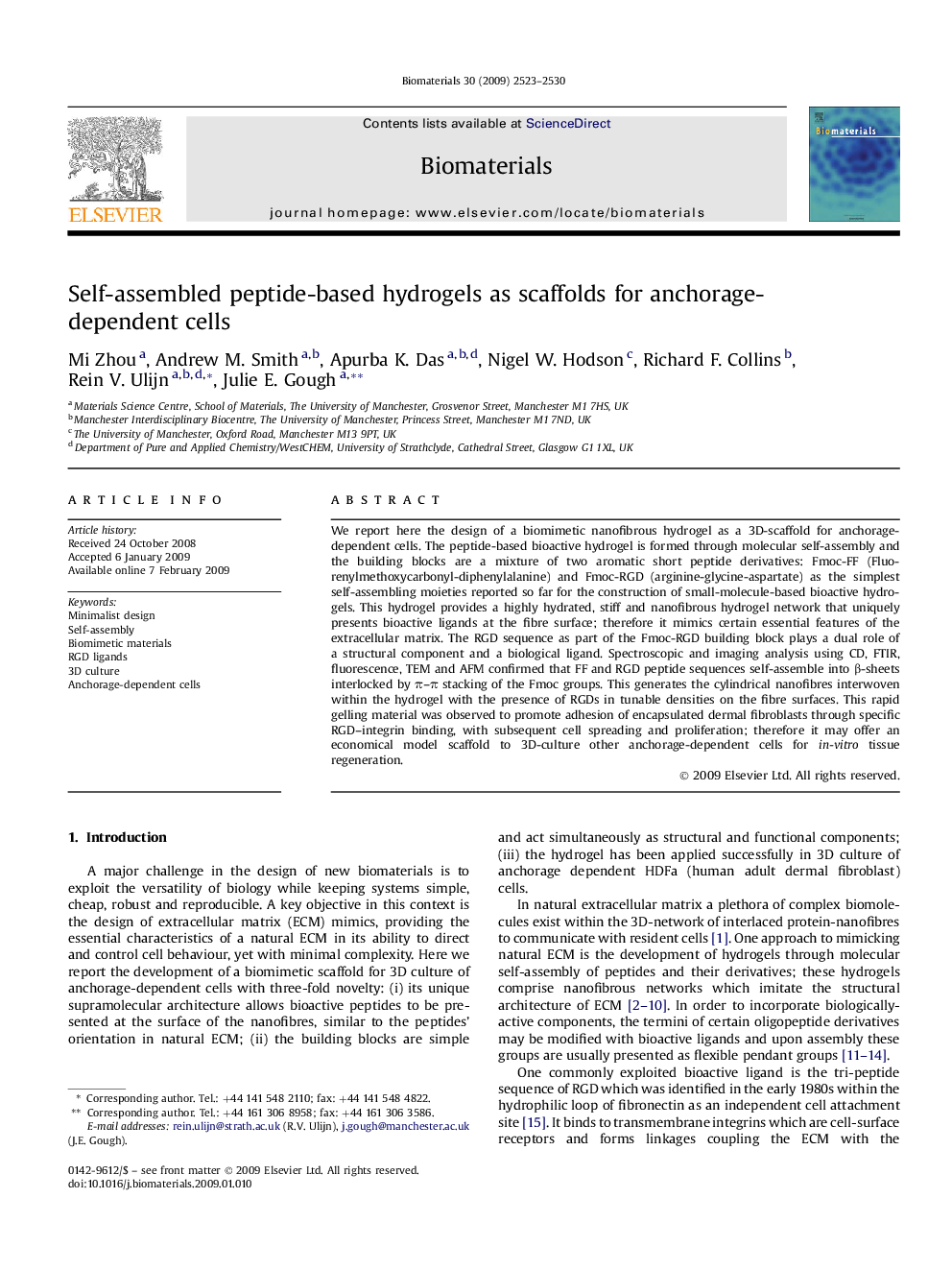| کد مقاله | کد نشریه | سال انتشار | مقاله انگلیسی | نسخه تمام متن |
|---|---|---|---|---|
| 10392 | 683 | 2009 | 8 صفحه PDF | دانلود رایگان |

We report here the design of a biomimetic nanofibrous hydrogel as a 3D-scaffold for anchorage-dependent cells. The peptide-based bioactive hydrogel is formed through molecular self-assembly and the building blocks are a mixture of two aromatic short peptide derivatives: Fmoc-FF (Fluorenylmethoxycarbonyl-diphenylalanine) and Fmoc-RGD (arginine-glycine-aspartate) as the simplest self-assembling moieties reported so far for the construction of small-molecule-based bioactive hydrogels. This hydrogel provides a highly hydrated, stiff and nanofibrous hydrogel network that uniquely presents bioactive ligands at the fibre surface; therefore it mimics certain essential features of the extracellular matrix. The RGD sequence as part of the Fmoc-RGD building block plays a dual role of a structural component and a biological ligand. Spectroscopic and imaging analysis using CD, FTIR, fluorescence, TEM and AFM confirmed that FF and RGD peptide sequences self-assemble into β-sheets interlocked by π–π stacking of the Fmoc groups. This generates the cylindrical nanofibres interwoven within the hydrogel with the presence of RGDs in tunable densities on the fibre surfaces. This rapid gelling material was observed to promote adhesion of encapsulated dermal fibroblasts through specific RGD–integrin binding, with subsequent cell spreading and proliferation; therefore it may offer an economical model scaffold to 3D-culture other anchorage-dependent cells for in-vitro tissue regeneration.
Journal: Biomaterials - Volume 30, Issue 13, May 2009, Pages 2523–2530